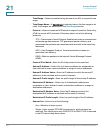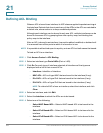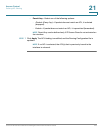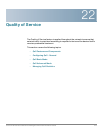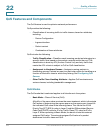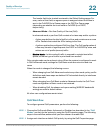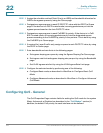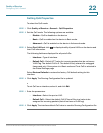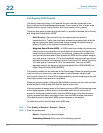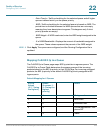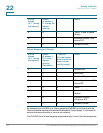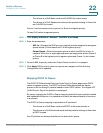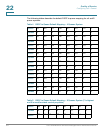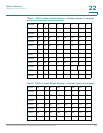
Quality of Service
Configuring QoS - General
415 Cisco Small Business 300 Series Managed Switch Administration Guide
22
STEP 3 Assign the schedule method (Strict Priority or WRR) and bandwidth allocation for
WRR to the egress queues by using the Queue page.
STEP 4 Designate an egress queue to each IP DSCP/TC value with the DSCP to Queue
page. If the device is in DSCP trusted mode, incoming packets are put into the
egress queues based on the their DSCP/TC value.
STEP 5 Designate an egress queue to each CoS/802.1p priority. If the device is in CoS/
802.1 trusted mode, all incoming packets are put into the designated egress
queues according to the CoS/802.1p priority in the packets. This is done by using
the CoS/802.1p to Queue page.
STEP 6 If required for Layer 3 traffic only, assign a queue to each DSCP/TC value, by using
the DSCP to Queue page.
STEP 7 Enter bandwidth and rate limits in the following pages:
a. Set egress shaping per queue by using the Egress Shaping Per Queue page.
b. Set ingress rate limit and egress shaping rate per port by using the Bandwidth
page.
c. Set VLAN ingress rate limit by using the VLAN Ingress Rate Limit page.
STEP 8 Configure the selected mode by performing one of the following:
a. Configure Basic mode, as described in Workflow to Configure Basic QoS
Mode
b. Configure Advanced mode, as described in Workflow to Configure Advanced
QoS Mode.
Configuring QoS - General
The QoS Properties Page contains fields for setting the QoS mode for the system
(Basic, Advanced, or Disabled, as described in the “QoS Modes” section). In
addition, the default CoS priority for each interface can be defined.



